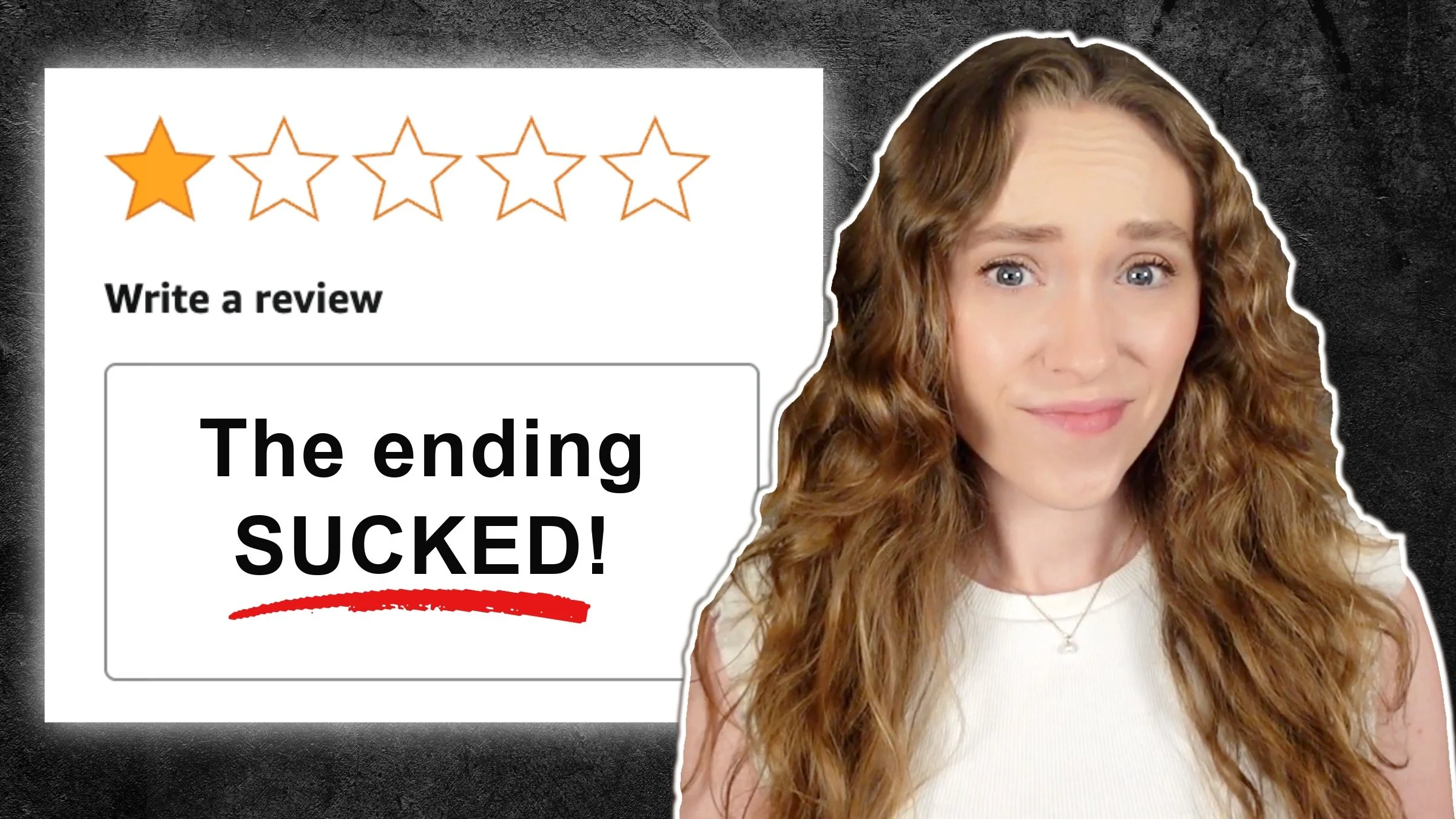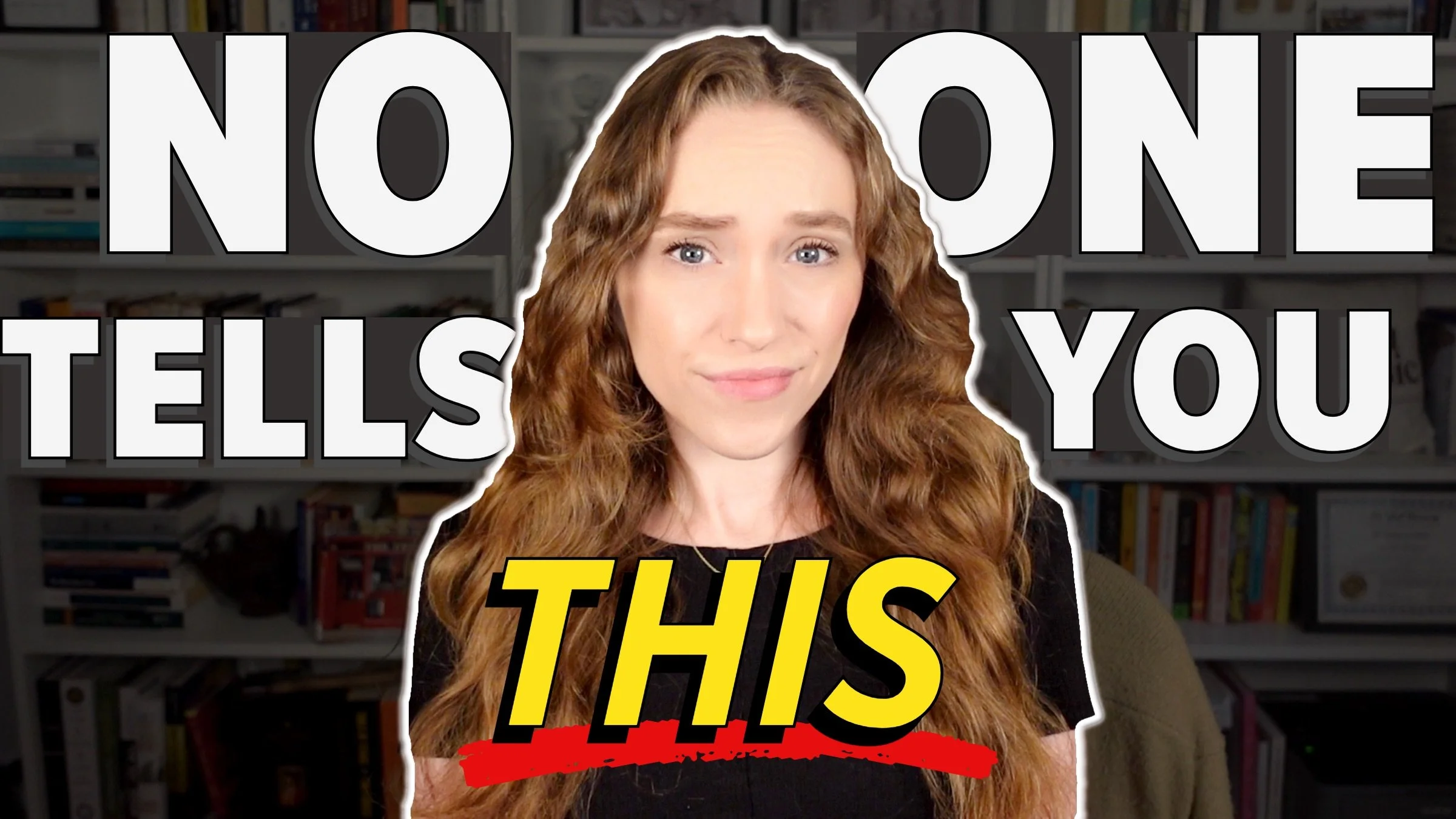5 Mistakes When Writing Plot Elements and How to Avoid Them
HIT PLAY OR READ THE POST BELOW:
A major component of writing a good novel is ensuring you have an interesting plot that makes sense and hooks the reader. That said, novel plotting can be challenging. So, to smooth the process, I'm going to walk through the five most common plot mistakes I see when editing novels and offer tips for writing plot elements that are effective, engaging, and seamless.
By ensuring that your plot flows without a hitch, you guarantee that your readers will be interested in your story from beginning to end while avoiding plot holes.
1. Convenient Discoveries
The first plot mistake I often see is convenient discoveries. This could be when a character finds something, like a letter or a diary entry, that has an interesting tidbit of information pertaining to their story. Or this could be a character conveniently running into someone on the street, causing the events of the novel to unfurl from there.
These types of convenient discoveries are common in thrillers, because there often needs to be a catalyst that starts the domino-effect chain of events that will build suspense and tension for the reader. However, all novels will have some of these convenient elements in them.
To be clear, having elements of convenience in your plot is going to be a necessity on some level. I'm not saying you have to eliminate every little convenient discovery that’s in your manuscript. Rather, the mistake is when these discoveries are too frequent. If you have too many random sightings that the characters just happen to stumble across, it’s going to chip away at your reader believing that your story is authentic.
By limiting the number of convenient discoveries, you can help maintain the believability of your story. Try to limit these moments to the realizations that are extremely critical to the plot, so much so that they can’t be revealed in any other way.
To fix these convenient discoveries, go through your novel with a fine-toothed comb and determine where you can alter a convenient discovery to make it more complex. By activating your characters to discover the item or information in another way, it will enrich your plot further and make you explore an avenue that you perhaps haven’t thought of before. It will also add authenticity to your story, since your revelations will no longer feel like they come out of thin air
2. Vague Timelines
The second plotting mistake is a vague timeline. This happens when it's unclear when events in the novel are taking place in relation to each other or how much time has passed between two subsequent scenes. This issue makes it difficult to track developments in the plot and the reader can get mixed up in their head.
To fix this, at the start of every chapter or section break, try to incorporate language that signals the passing of time. One example would be: “It had been three months since I got the job.” With this language, the reader now knows exactly how much time has passed, along with a small recap of what happened in the previous chapter.
If your novel utilizes multiple timelines or crosses a large time span, another subtle technique to use is including dates or years in chapter headings. This quickly gets the point across without interrupting the reader’s flow. The only caveat with this point is that if you mark the date for the first five chapters, then you must continue denoting the date for the rest of the book. The inconsistency will confuse readers more, rather than clarify the timeline for them.
3. Rabbit Holes
The next plot hole to avoid is one I see in nearly every single novel. It's what I call rabbit holes. This is when the narrative diverges from the main storyline to discuss something else for some amount of time. It could be for just one paragraph or, in the worst cases, several pages or a full chapter.
These tangents aren’t consistent with the main storyline and don’t seem relevant to the plot at hand. For instance, this could look like diving into a secondary character's backstory or providing a heavy amount of historical or background context that actually isn’t pertinent to the characters’ experiences. This information might be super interesting to you, and maybe you want to dive in and tell the reader everything about the year 1912 and what was going on in the world at that time, but to the reader it can come across as distracting.
Another type of rabbit hole is when there’s a flashback or dream sequence that doesn’t seem to be connected to the main storyline.
The way to fix these is very straightforward, as in most cases you should just omit them. It can be tough to decide which passages to cut and which to keep, so you might want to employ a beta reader or professional book editor to help you identify those areas that are going down rabbit holes. To you, they likely don't feel like rabbit holes, as you wrote them for a reason, but seeing it from a third party perspective will help you identify them. Then, once you cut them out, the narrative is going to flow much more smoothly and swiftly.
4. Lack of Cohesion
The next plot mistake is lack of cohesion. This is when the first part of the story, maybe the first third or the first half, looks nothing like the rest of the book. This could happen if, for instance, you introduce a second character perspective halfway through the novel or if you jump far ahead in time. For instance, the first half of the novel takes place when the protagonist is in high school and then the second half fast-forwards to when they are an adult.
Why this becomes an issue and why it feels like a lack of cohesion is because your reader is going to become invested in whatever you present to them in those very first pages. They're going to dive into this character story and what's going on in the beginning, but then feel a little cheated if the novel takes an entirely different direction that they didn't see coming.
Fixing this issue can be a tough one, because it often requires major restructuring. Think about your novel and the focus areas of the first part of your novel, and then think about the second half. Make sure there is a cohesive theme or plotline connecting the two. If there is none and they feel like two separate novels, there’s the issue. You may end up realizing you have to lean into one part of the story and omit the other one entirely or save it for a sequel.
Alternatively, you might have to cleverly switch between the storylines earlier in the novel. For instance, say the first half of your novel is from one character's perspective and the second half of the novel is from their sister's. Instead of having the hard divide between the first character’s and sister’s perspectives, from the start you can alternate chapters or sections between the two characters.
This way, the reader knows from the beginning there are two protagonist characters at hand. In the original plot structure, you risk the reader getting extremely invested in that first character, causing them to be turned off with the story when the narrative switches to being from their sister’s perspective. Essentially, try to think about your plot from the reader's perspective.
There are instances where your plot needs to have a perspective or time shift, and that’s perfectly fine. Just try to avoid the main issue at hand, which is when the overall novel feels disjointed and bisected by the shift. For example, let’s say the first main character dies, so the perspective shifts to being from their sister’s perspective. If the shift is successful in a novel, the perspective or time shift won’t make the second part of the novel read as if it’s a completely different tone or story because the shift is inherently tied into the plot. It will still propel the reader forward without making them feel confused or jerked around.
5. The Snowball Effect
The last plotting mistake is what I call the snowball effect. This usually occurs in the last third or quarter of the novel. There will be a series of events that build on one another and get bigger and bigger and bigger, like a snowball, until they are completely out of control and the reader can no longer follow what's happening.
What's happening here is that you, as the writer, are trying to make an awesome plot climax and trying to show the reader twists and turns and revelations. However, when these climatic events keep occurring chapter after chapter, it comes on too strong. The revelations aren’t being given enough breathing room for the reader to understand and reflect on the implications, so it results in them getting overwhelmed and then feeling like those revelations weren't earned.
It might be easier to use an example to illustrate this. So, say the biggest climactic point and twist in your novel is the moment two characters find out they're related. Then, they specifically discover that they're siblings. That's another revelation the readers have to grapple with. Then, it’s revealed that they're twins. Now, with these three revelations coming in a row after each other, it creates a snowball effect the reader has to contend with.
Instead of taking the time to understand the reveals one by one, this approach runs the risk of the reader feeling like the ending just didn't deliver. They might say the ending wasn't believable because so many random things started happening at once, or they might say it felt like the plot got out of control in the last third.
Make sure that you fix this, so the reader feels like that most climactic point of your novel is also the most exciting. I recommend trying to space out these revelations. Make sure they're given their due time on the page, have the characters reflect on them, talk about them, think about them internally before you hit the reader with another revelation.
Then, lastly, when all the reveals are out on the table and the climax is over, make sure you have a little falling action. It doesn't have to be a full chapter long, but just some closing passages that show us how the characters have evolved and how they are reacting to the changes they have seen over the course of the novel. By offering this moment of rest after the tumultuous climax, you can both finish your characters’ arcs and have the reader come to that sense of resolution as well.
I hope calling out these mistakes helps you go back into your manuscript and see if you're falling into some of these same errors. Avoiding plot holes can be tough, especially if you just finished your manuscript, so taking time away from your project can help refresh your eyes for editing. By fixing these mistakes, you can ensure that you’re a pro at writing plot elements that flow in a smooth, engaging manner.
Thanks for reading, and happy writing!






